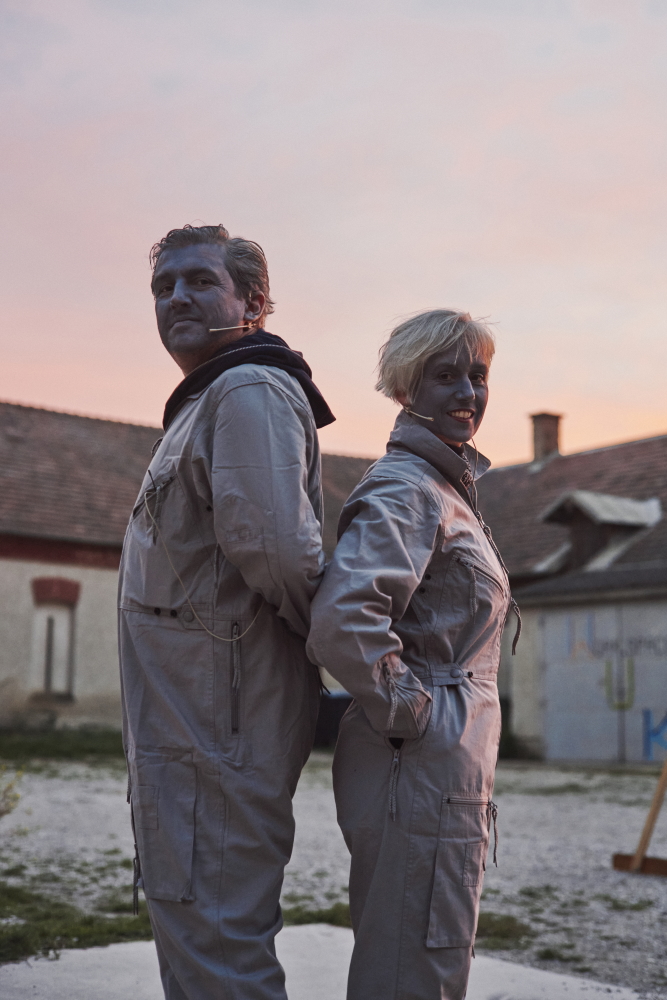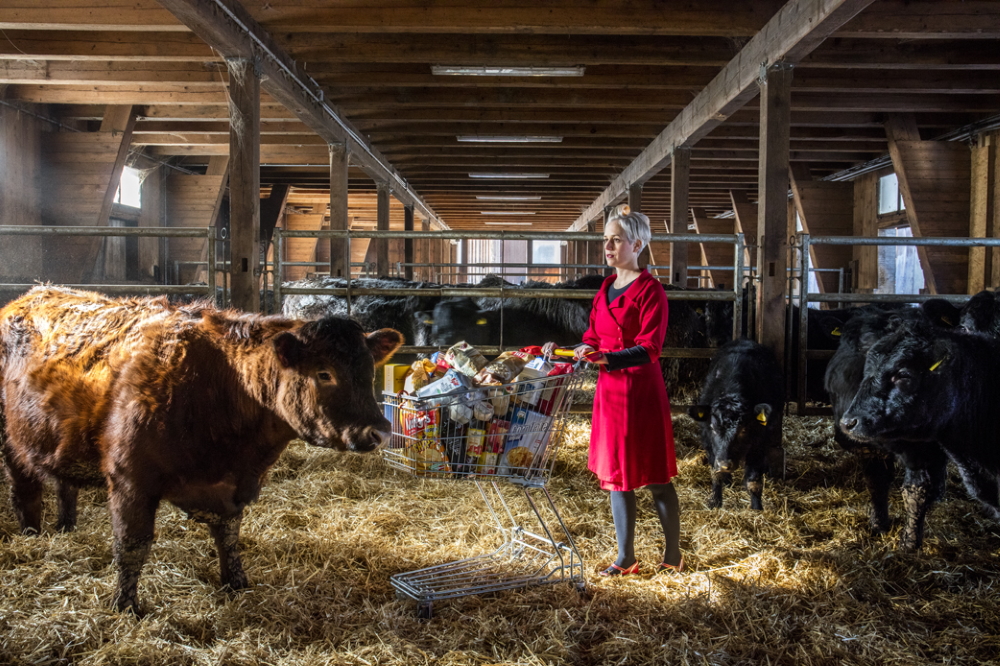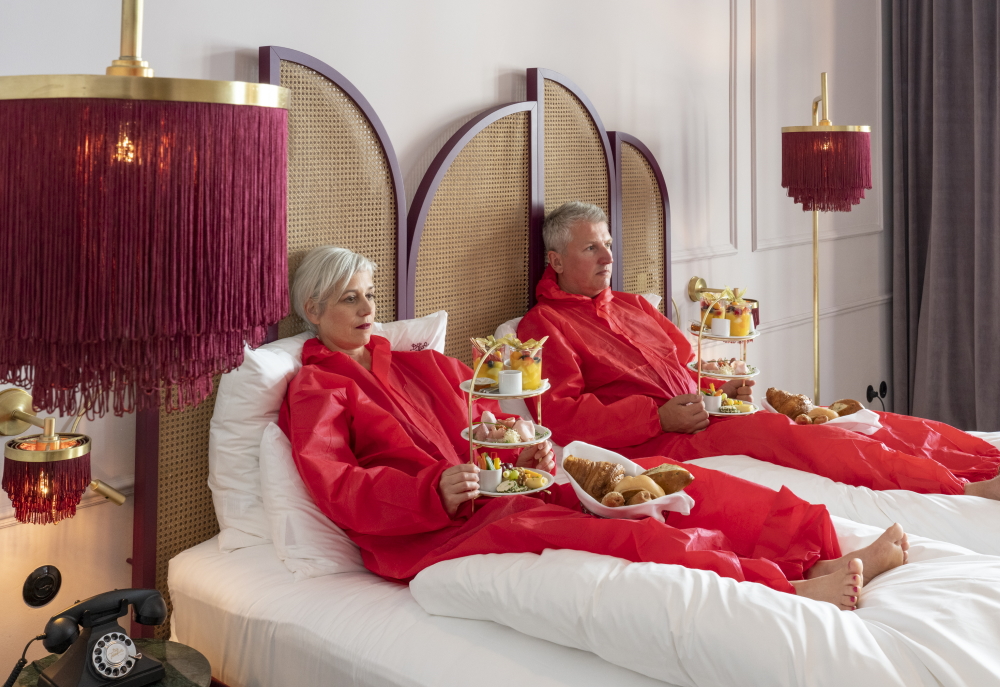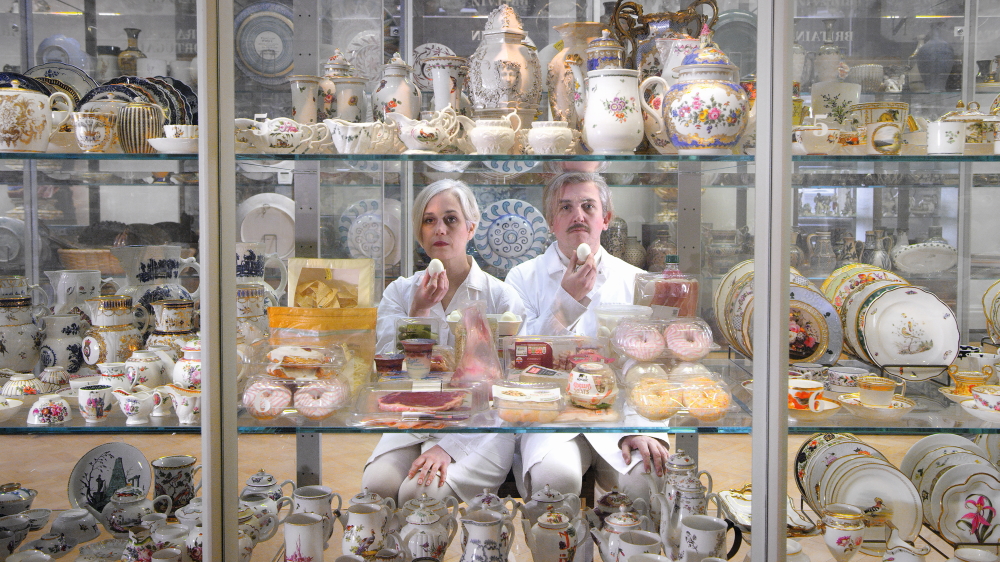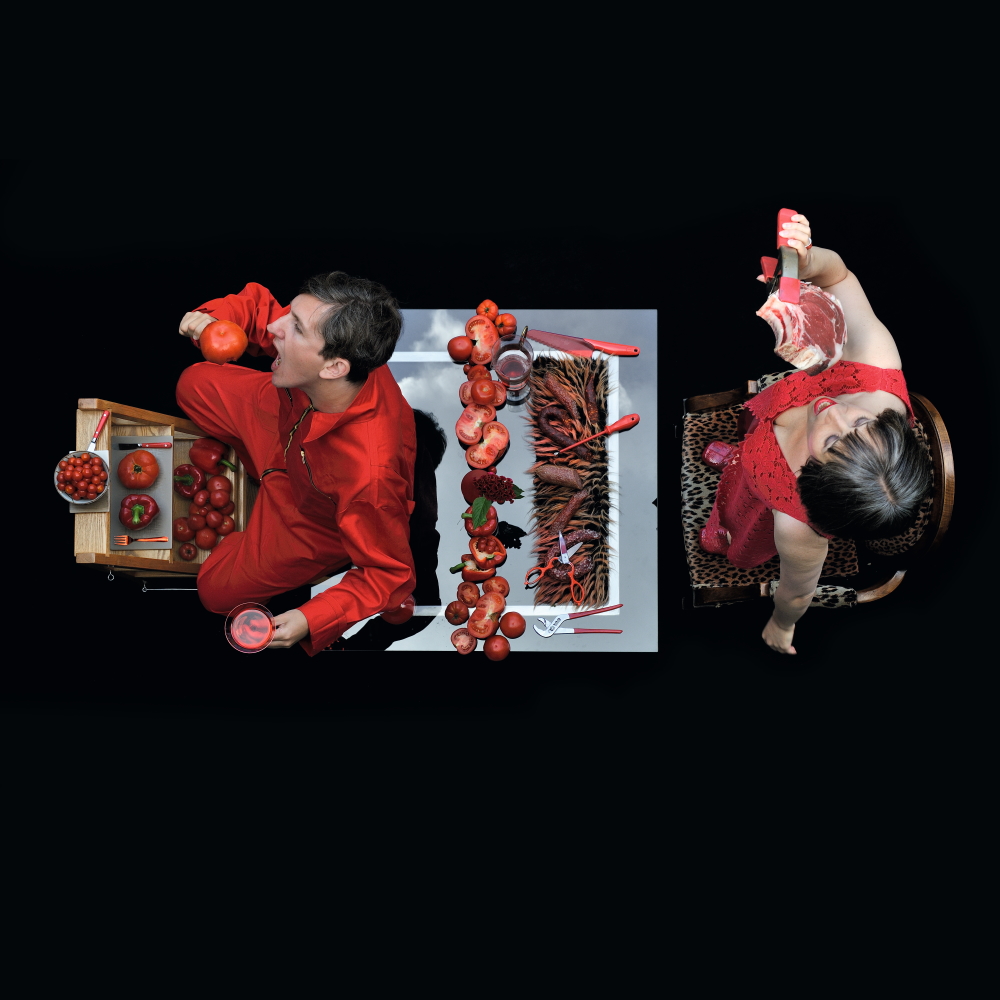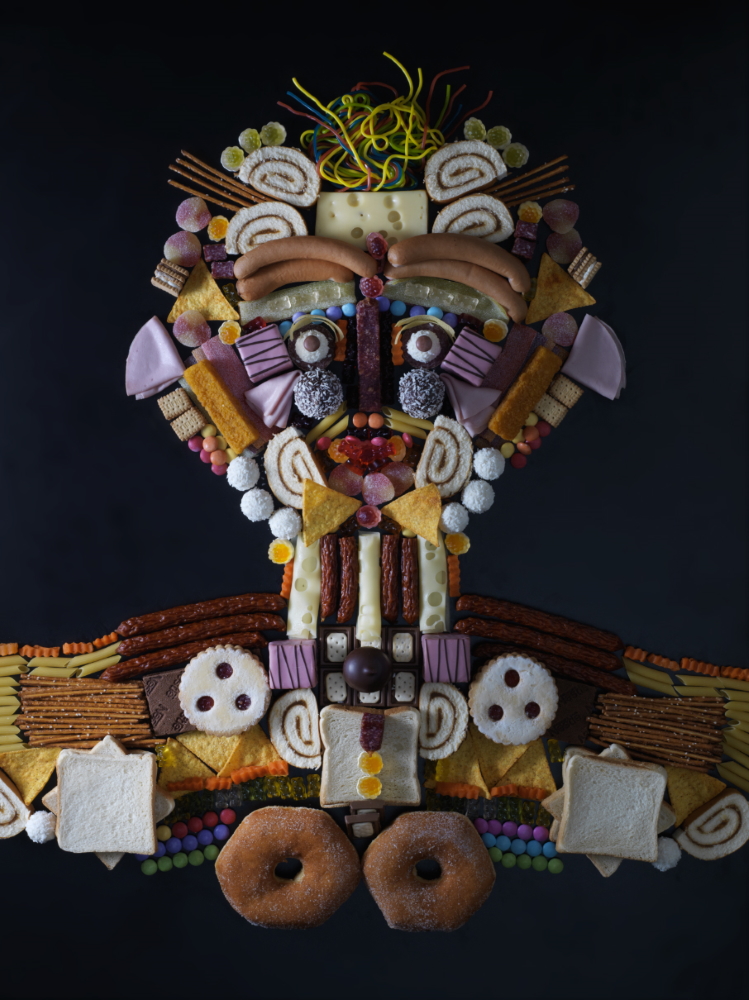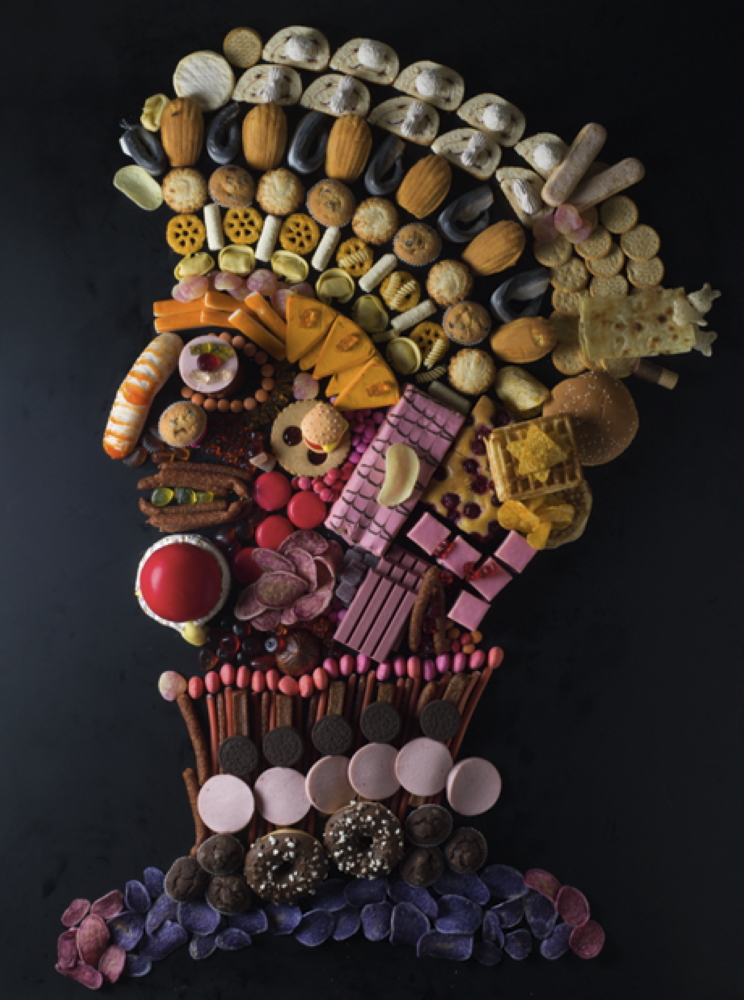honey and bunny
transdisciplianary artists
Austria
Food brings life. Food brings emotions. Food makes culture. What and how we eat is an expression of culture, socialization, gender, age, society, wealth, morals, and philosophy of life. Prior to its daily consumption food has to be produced. This causes air pollution, soil erosion, land and water grabbing, inhumane working conditions. It needs lots of (fossil) energy and may destroy biodiversity. Fertilizers, pesticides, fungicides, industrial farming provoke additional environmental costs and have an impact on the health of the planet and people. Therefore the prevailing system of monocultures, mass production, transport, warehouses, fully stocked suburban supermarkets and eating habits has to be challenged. But culture hinders (wo)men to change their lifestyles to a future- and environment friendly one, where sustainability is key. Generating awareness for the topic „political and ecological consequences of food consumption“ is the main task for an Austrian artist duo. They are „pioneers of food design in the sense of new ways of thinking about items that already exist“ (‚The New Yorker‘). In order to convey a serious concern, the two rely on scientifically fact-based performance art, exhibitions, films, teaching and books – always inteligent, informative, but entertaining with a tongue-in-cheek attitude.
honey and bunny
transdisciplianary artists
Austria
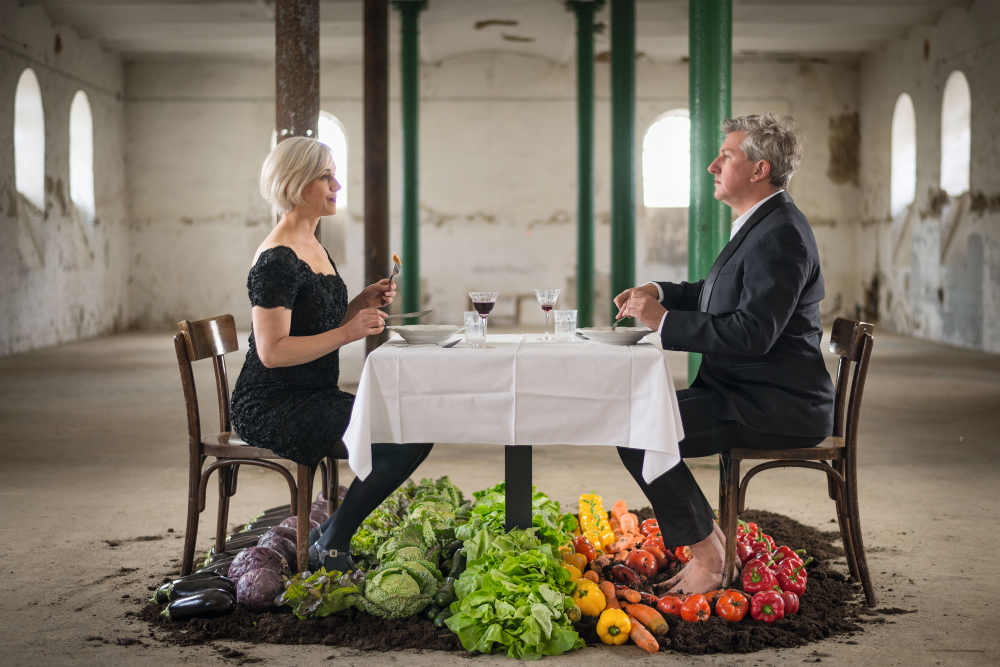
Why do we eat the way we do (something that is not biological but culturally predetermined)? Why are there a variety of different eating utensils as well as dishes and separate dining rooms? Why do we often dress particularly nicely when we go to a restaurant? Why do many people favour meat as a food that is allowed to cost something, whereas vegetables are considered to be of secondary importance? Why should food always be served in an acute angle to the consumer and why doesn’t it have a triangular shape? It's questions like these that honey & bunny explore.
At their art installation „market of externalities“ (in Italy) the couple presented a long decorated dining table. This symbol for a civilised community is covered with soil and some “strange” powders. It looks a bit devastated. The soil seems broken. The tableware is also a bit different – there are glasses from laboratories, surgeon instruments, petri dishes, Erlenmeyer flasks, containers for dangerous goods instead of noble porcelain dishes. And these table objects are filled with strange powders, liquids and even with dirty water. Is it maybe Glyphosat, Azoxystrobin, Atrazine, Chlorpyrifos or Metolachlor? Or is it just polluted air or water? The glasses and containers are simply filled with fungicides, herbicides, insecticides, additives, oil (!) and polluted elements. This table is covered with externalities of food production. Anyone who sees this will feel a shiver down their spine, bearing in mind the fact that we consist of what we eat and every molecule that is consumed remains part of the body for approximately seven years!
How about the plates on the table? They are the ones, which represent food most in 2017 – iPads. On these tablets visitors find short videos. They present ideas of social sustainability, of inequality, of poverty, of fairness. The short films are interpretations of the cultural value: CONSUME.
In their project „SUSTAINABLE arrangement“ honey & bunny had consumers and apprentices reorganise a supermarket. Following a prior consultation the products were taken out of the shelves and sorted completely different by the criterias water consumption, transport route and fairness. According to sustainability-balance-sheets the products were then replaced and the new organisational systems were discussed.
A great number of events was realized by honey & bunny over the years. The couple whose civil names are Sonja Stummerer (22 February 1973) and Martin Hablesreiter (05 February 1974) became known to each other while both studying architecture at the University of Applied Arts in Vienna. During a joint working stay at Arata Isozaki & Associates in Tokyo in 2001, they became interested in food design. The key experience was the following and recalled in „The New Yorker“-story: „Bringing a Sachertorte — a classic Austrian chocolate cake — to a gathering, and watching an unwitting Japanese acquaintance slice lengthwise across the cake’s diameter instead of cutting wedges from the center. Mr. Hablesreiter almost intervened, but then asked himself, “Why do we think it’s wrong?” The research they did to answer that question formed the basis for their books, which launched their careers in food design, and the couple’s interest in the culinary world led them to the topic of sustainability.“ In 2003 the pair founded the interdisciplinary design studio ‚honey & bunny‘ in Vienna. Since then they not only built various rooftops in their hometown, but engage with the supposedly banal of everday culture. This means curating exhibitions in Italy, Denmark, Poland, South Korea, Austria and Great Britain, directing „food design – the movie“, holding numerous lectures, teaching at universities in Bucharest, Istanbul and Chennai/India, devolping performances and publishing books like „eat design“, „food design“, „food design small“, „food design XL“.
Regarding their collaborations at numerous performances they say: „This transdisciplinary cooperation bases itself strongly on the idea of using artistic actions as a new method for education for sustainable development in order to academically accompany, and further develop, the transdisciplinary space. Basically every meeting with scientists means learning from each other. So it is more than important to meet constantly, but we do interpret these interdisciplinary chats as creating – not as learning. We do need to WORK TOGETHER – not to get inspired by each other. If we talk about fairness we do need to go out to streets to fight for. We do need to present, to perform, to convince. We need to change. But we need to help each other – to cooperate to find ideas of change. Learning is not enough!“
Sonja Stummerer and Martin Hablesreiter live in Vienna/Austria.
Interview October 2022
Changing consumers‘ culture: sustainability is key!
INTUITION/IMAGINATION
How does intuition present itself to you – in form of a suspicious impression, a spontaneous visualisation or whatever - maybe in dreams?
We would not consider it intuition. Design / creativity is always based on research and on a kind of negative feeling: Something does not “work” properly. Something does not exist. Something runs totally wrong. Then you start to think about it, do a lot of research (maybe other people did solutions or ideas already) and then – don´t give a fuck…
Will any ideas be written down immediately and archived?
No! Never. We discuss ideas and if we find a project partner we start to realize it.
?: How do you come up with good or extraordinary ideas?
We do not know. But we read a lot. We try to understand all our ideas as arts & science projects. So we do a lot of research on different issues. We try to find interesting people to talk to them. Nothing is as inspiring as a good chat with somebody. Then we start to discuss internally and sometimes a good idea pops up.
Are great ideas based on intuition and do they reveal themselves in a kind of clear as well complete version that just has to be realized? Or is it endless trials and errors (after the first spark) that result in constant developments up until the final result?
We do not think that something like talent or intuition exists. Creativity is just a kind of work, like science or accounting. It s just a matter of goals. If you define ethical goals for instance, you need to find new solutions. But therefor you need a lot of knowledge and experience finally. And we do a lot of errors naturally.
What if there is a deadline, but no intuition? Does the first fuel the latter maybe?
If you have a very interesting project partner, like a very good museum, it does not happen. Good producers help to create extraordinary ideas. If not, the project is not worth to create extraordinary ideas – therefor you have something in the drawer then.
INSPIRATION
What inspires you and how do you stimulate this special form of imaginativeness?
Everything basically! Our daily routines are full of inspiration.
How do you separate the good from the bad and which ideas are worthwhile to be explored further or whether one idea has the potential of being outstanding really?
By discussions. The most difficult part of our work is to filter ideas. That needs a lot of discussions – and finally it is a kind of opinion. If we write a book for instance, we do a lot of text passages and then we need to create an overall concept – which is always different to the one which we had at the beginning – that s really difficult. How to precise? You need to kick out a lot and you need to let new ideas in. That could be very hard.
Has it to appeal to you primarily or is its commercial potential an essential factor?
It has to fulfil ethical goals like social and ecological sustainability. And it has to appeal potential recipients. Commercial potential is senseless.
Do you revisit old ideas or check what colleagues/competitors are up to at times?
You need to know what colleagues or friends do – all the time! It s really embarrassing to copy them, without knowing that.
CREATIVITY
Which time/place/environment suits your creative work process the best (tranquillity or pressure) and which path do you take from theory/idea to creation?
Bed, shower, restaurants, coffee houses, walks. One of us thinks about potential solutions at the beginning of a project. Then we discuss it – at different places. Then we write a concept paper together and then we start realizing it – it depends then on the method. It makes a difference if you produce a video, a book or a performance.
What is better in the realization process: speed and force creativity i.e. grasp the magic of the moment, or a slow, ripening process for implementation/elaboration?
We do not understand that question. Creativity is not on purpose available. It needs time.
If problems occur during creativity or one’s stuck even, how can these be solved?
That does not happen.
How important are self-doubt and criticism (by others) during such a process i.e. is it better to be creative on your own, only trust your own instincts, or in a team?
Extremely important. That´s actually how collaboration works. We are a duo. We criticise each other every day. Being selfish would be very contra productive. That´s the foundation of our success. The one-man-genius show is a very yesterdays’ concept.
Should a creative always remain true to him-/herself including taking risks & going against the flow or must one, for reasons of (commercial) survival, make concessions to the demands of the market, the wishes of clients and the audience’s expectations?
This commercial shit is not important for us. Once you start to work for the market you are not creative anymore. And because of the overall social and ecological problems (climate change…) we desperately need other goals instead of this commercial legend. Either you are creative or a prostitute! But you need to understand the audience you want to deal with or convince – it makes a difference if you work in a supermarket or in a museum. Creatives have a lot of responsibility and doing always the same shit – just because – we would be very arrogant. How are the needs and thoughts and opinions of your recipients? You need to understand that, because finally you will try to manipulate them – that’s a major goal or side effect of creativity. We need to accept that and we need to observe that properly. But you could never touch anybody if you are not interested in the life circumstances of that person(s).
How is innovation still possible if one has established a distinctive style and, just in case, is it good to be ahead of one’s time even one hazards not being understood?
At least you need it, because otherwise it’s getting totally boring.
When does the time come to end the creative process, to be content and set the final result free - or is it work-in-progress with an endless possibility of improvement?
In a way it’s an endless work in progress. It does never end. Every project is just a spotlight.
In case of failure or - worse - a creativity crisis how do you get out of such a hole?
Take a break! Visit exhibitions. Try to get inspired. Read. Cook.
SUCCESS
Should/can one resist the temptation to recycle a ‘formula’ one’s successful with?
Why not? You could try to make it even better.
Is it desirable to create the ultimate/timeless work, but doesn’t “top of the ladder” bring up the question of “what’s next?” i.e. isn’t such a personal peak “the end”?
No. No. No. We do never see successful projects before others do that. Then it’s too late to think about it anyhow.
MY FAVORITE WORK:
There is no work that we are particularly proud of and no project that presents us particularly well. Every project is unique in its own way. In the end, it's always the particularly expensive, elaborate projects that are presented, but the small, fine, poorly documented thing on the street was perhaps much better for everyone involved...
